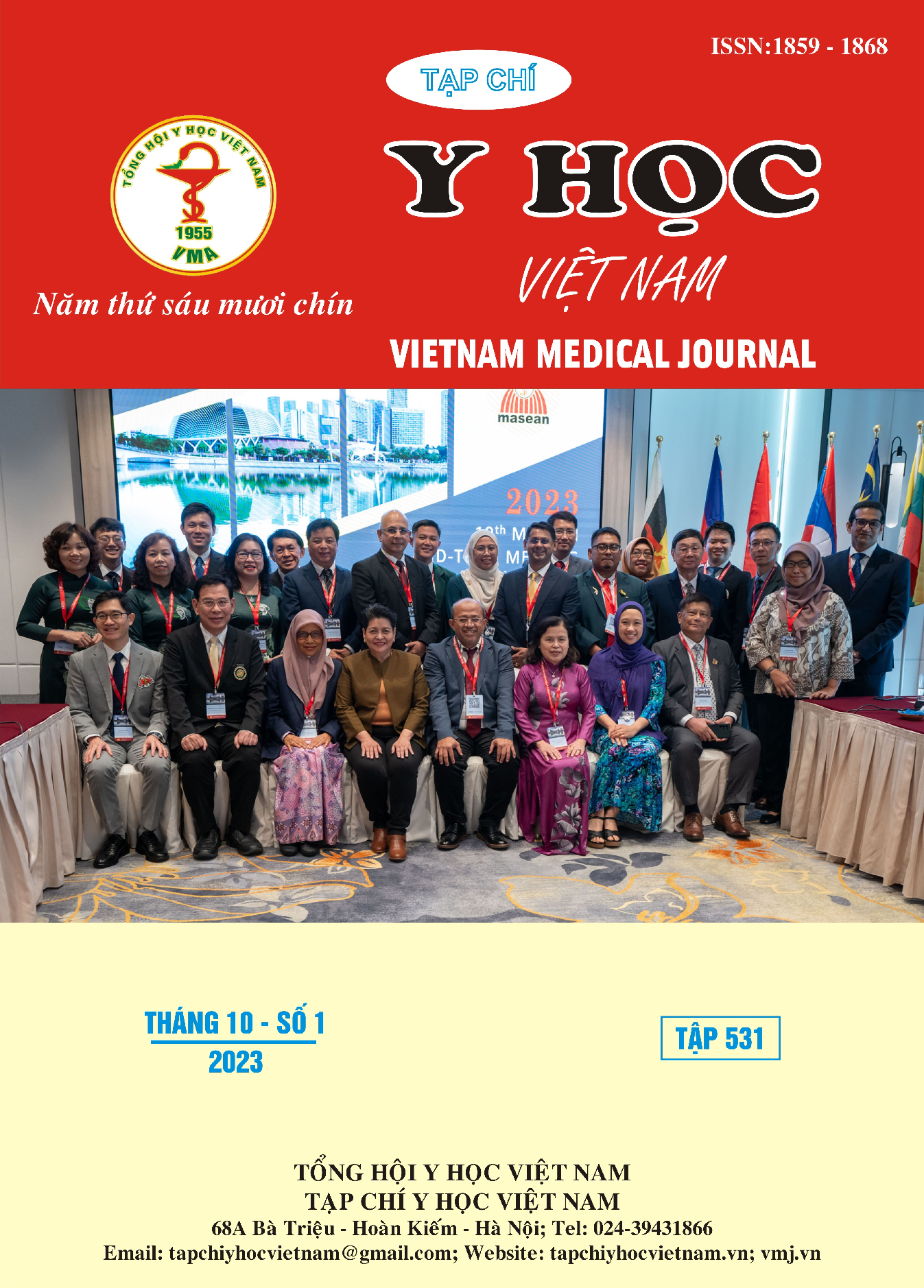EVALUATE THE NEONATAL INFECTION AT THANH HOA PEDIATRIC HOSPITAL IN 2022
Main Article Content
Abstract
Neonatal infections is common disease of newborn including the inflammation of one or more organs in the body due to infection.Objectives: To evaluate the characteristics of neonatal infection at Thanh Hoa Pediatric Hospital in 2022. Subjects and methods: A cross-sectional study was conducted on 465 patients diagnosed with neonatal infection in the Neonatal Intensive Care Unit and Neonatal Department of Thanh Hoa Pediatric Hospital from January 1, 2022, to December 31, 2022. Results: The neonatal infection rate of the full-term group was 80.2%, the preterm group was 20.8%, there was no gender difference. There was a difference between the late-onset neonatal infection group at 74.2%, which was higher than the early-onset neonatal infection group at 25.8%. The main reason for admission was cough accounted for34.2%, dyspnea is 29.3%, fever is 9.7%, poor feeding is 7.1%. Neonatal infections accounted for the highest rate, pneumonia diagnosed: 55.9%, sepsis 16.1%, enteritis 10.1%, cellulitis: 5.6%, meningitis: 2.2%, urinary tract infection: 1.1%, omphalitis: 0.9%. Pneumonia and cellulitis aremost seen in the late-onset neonatal infection group. A total of 23.9% of the samples showed positive culture, including 11.7% positive blood culture, 32.3% positive cerebrospinal fluid culture, 11.4% positive tracheal fluid culture, and 22.2% positive cerebrospinal fluid culture. The most common bacteria causing infections in newborns were Hemophilus influenzae, which is 29.9%. Conclusion: Late-onset neonatal infection are common in the neonatal period with pneumonia accounting for a high rate the pathogenic bacterium Hemophilus influenzae.
Article Details
Keywords
Neonatal infection
References
2. Fleischmann C, Reichert F, Cassini A, et al. Global incidence and mortality of neonatal sepsis: a systematic review and meta-analysis. Arch Dis Child. 2021;106(8):745-752. doi:10.1136/ archdischild-2020-320217
3. Trần Diệu Linh. Một Số Nhận Xét về Tình Hình Nhiễm Khuẩn Sớm ở Trẻ Đủ Tháng Tại Trung Tâm Chăm Sóc và Điều Trị Sơ Sinh Bệnh Viện Phụ Sản Trung Ương. Tạp chí Phụ Sản Trung Ương; 2015; 13(2): 118 - 121
4. Ngô Thị Hiếu Minh. Mô Hình Nhiễm Khuẩn Sơ Sinh và Thực Trạng Sử Dụng Kháng Sinh Trong Điều Trị Nhiễm Khuẩn Huyết Sơ Sinh Tại Bệnh Viện Nhi Trung Ương,. Luận văn chuyên khoa cấp II. Trường Đại học Y Hà Nội; 2019.
5. Huỳnh Thị Thanh Thúy. Nghiên Cứu Đặc Điểm Nhiễm Khuẩn Sơ Sinh Tại Bệnh Viện Nhi Quảng Nam. Nghiên cứu y khoa; Sở y tế Quảng Nam; 2015.
6. Sharma CM, Agrawal RP, Sharan H, Kumar B, Sharma D, Bhatia SS. “Neonatal Sepsis”: Bacteria & their Susceptibility Pattern towards Antibiotics in Neonatal Intensive Care Unit. J Clin Diagn Res. 2013;7(11):2511-2513. doi:10.7860/JCDR/2013/6796.3594
7. Đoàn Thị Thanh Bình. Đặc điểm lâm sàng, cận lâm sàng nhiễm khuẩn sơ sinh tại bệnh viện sản nhi Nghệ An. Tạp chí y học Việt Nam 2023; 527(1) :30-33.
8. Cailes B, Kortsalioudaki C, Buttery J, et al. Epidemiology of UK neonatal infections: the neonIN infection surveillance network. Arch Dis Child Fetal Neonatal Ed. 2018;103(6):F547-F553. doi:10.1136/archdischild-2017-313203


